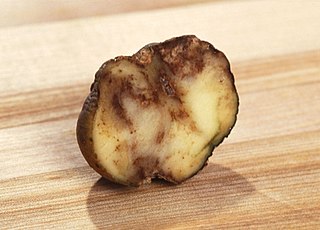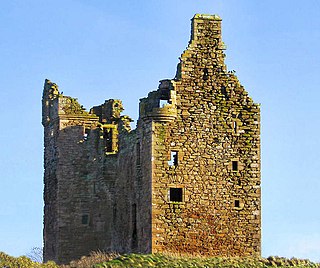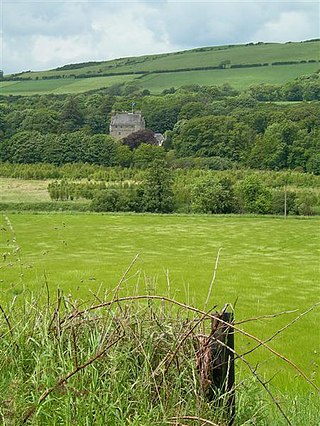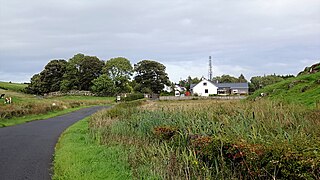

Emily Eliza Steele Gordon, Lady Cathcart (néePringle; 6 August 1845 – 8 August 1932) was a Scottish aristocrat known for her association with the Highland Clearances.


Emily Eliza Steele Gordon, Lady Cathcart (néePringle; 6 August 1845 – 8 August 1932) was a Scottish aristocrat known for her association with the Highland Clearances.
Cathcart was born on 6 August 1845 at Nellore, British India, [1] the first child of John Robert Pringle of the Madras Civil Service and Hester Helen McNeill, daughter of Gen. Malcolm McNeill, of the Madras Army, great-uncle of Lord Colonsay. [2]
In 1847, her father died at sea when the family was traveling back from India. [3] The following year, at Gretna Green, her mother remarried to Alexander "Lockhart" James Petty Menzies, a swindler and forger, with whom she had a son. In 1851, he was sent on the convict ship Pyrenees to Australia, where he died in 1858 falling off a horse while kangaroo hunting. [4]
She and her younger brother were brought up by their grandfather, Sir John Pringle, 5th Baronet of Stichill, and his second wife, Lady Elizabeth Maitland Pringle, their step-grandmother, daughter of John Campbell, 1st Marquess of Breadalbane. [2] Their grandmother was Emily, daughter of Norman MacLeod. [5] Her brother, John, died in 1860 while at St Peter's School in York, aged 13. Both father and son are commemorated on a stained glass window erected in 1862 in the chapel at the school. [6] [7]
Her first marriage was in 1865 to Captain John Gordon, [8] the illegitimate son of Colonel John Gordon, who was known as "the richest commoner in the northern kingdom". [9] He had inherited his father's extensive assets, valued at £2-3 million in 1858, on the lower estimate equivalent to £254,000,000in 2023. His estates included Cluny Castle, North and South Uist, Benbecula, Eriskay, and Barra. [10]
When Captain Gordon died without legitimate issue in 1878, Emily Gordon inherited his money and estates. [11] Her second husband was Sir Reginald Archibald Edward Cathcart (d. 1916) whom she married in late 1880 at St George's Hanover Square, London. [11] He was the sixth baronet of Cathcart, succeeding to the title in 1878. The Cathcart family seat was Killochan Castle near Girvan in Ayrshire, but the couple lived primarily in Titness Park, Sunninghill, Berkshire. [10] [12] [13]
Known for her anti-Catholicism, she played a leading role in the Highland Clearances as she continued the mass evictions initiated by her father-in-law. [14] Many evicted crofters on her lands were forcibly re-settled in Regina and Wapella, in Saskatchewan, Canada, possibly due to the shares she held in the Canadian Pacific Railway. [11]
In 1891, Lady Cathcart commissioned Old Tom Morris to design a golf course at Askernish on South Uist. She included a clause in the crofters tenancy agreements retaining the right to allow golf to be played on the land. [15]
Lady Cathcart never lived in the highlands and is thought to have visited only once; [8] she took ten Vatersay crofters to court in 1908 after they refused to vacate their cottages. They were sentenced to serve two months imprisonment but released two weeks early.[ citation needed ]
She died on 8 August 1932 at Margate in Kent. [16] Her will included instructions for a Long Island, United States emigration fund to be set up but this was never undertaken as the trustees refused to carry it out for fear of repercussions. [11]

South Uist is the second-largest island of the Outer Hebrides in Scotland. At the 2011 census, it had a usually resident population of 1,754: a decrease of 64 since 2001. The island, in common with the rest of the Hebrides, is one of the last remaining strongholds of the Gaelic language in Scotland. South Uist's inhabitants are known in Gaelic as Deasaich (Southerners). The population is about 90% Roman Catholic.

Benbecula is an island of the Outer Hebrides in the Atlantic Ocean off the west coast of Scotland. In the 2011 census, it had a resident population of 1,283 with a sizable percentage of Roman Catholics. It is in a zone administered by Comhairle nan Eilean Siar or the Western Isles Council. The island is about 12 kilometres from west to east and a similar distance from north to south. It lies between the islands of North Uist and South Uist and is connected to both by road causeways. Benbecula's main settlement and administrative centre is Balivanich.

Charles Henry Gordon-Lennox, 6th Duke of Richmond, 6th Duke of Lennox, 1st Duke of Gordon,, styled the Earl of March until 1860, was a British Conservative politician.

The Highland Potato Famine was a period of 19th-century Highland and Scottish history over which the agricultural communities of the Hebrides and the western Scottish Highlands saw their potato crop repeatedly devastated by potato blight. It was part of the wider food crisis facing Northern Europe caused by potato blight during the mid-1840s, whose most famous manifestation is the Great Irish Famine, but compared with its Irish counterpart, it was much less extensive and took many fewer lives as prompt and major charitable efforts by the rest of the United Kingdom ensured relatively little starvation.

George Montagu, 4th Duke of Manchester PC was a British politician and diplomat.

Colonel William Montagu, 5th Duke of Manchester, styled Viscount Mandeville until 1788, was a British peer, soldier, colonial administrator and politician. He was Governor of Jamaica from 1808 to 1827, and Manchester Parish was named after him.

John Murray, 4th Duke of Atholl, KT, PC, FRS, styled Marquess of Tullibardine from 1764 to 1774, was a Scottish peer.

Louisa Jane Hamilton, Duchess of Abercorn was a member of the British aristocracy. She and her husband, James Hamilton, 1st Duke of Abercorn, had 13 children, and were "long remembered as the most handsome and most distinguished young couple of their generation."

John Gordon was a Scottish soldier and Tory politician.

Sundrum Castle is a Scottish medieval castle located 1.5 kilometres (0.93 mi) north of Coylton, South Ayrshire, by the Water of Coyle river. It was built in the 14th century for Sir Duncan Wallace, Sheriff of Ayr. The castle was inherited by Sir Alan de Cathcart, who was the son of Duncan's sister. The Cathcarts sold Sundrum in the 18th century, where it eventually fell into the possession of the Hamilton family. The Hamiltons expanded the castle in the 1790s, incorporating the original keep into a mansion.

Cluny Castle was originally built c.1604 as a Z-plan castle replacing either a house or small peel tower. Sited in the parish of Cluny, it is south of Monymusk and north of Sauchen in Aberdeenshire, north-east Scotland. Owned by three separate branches of Gordon families over the centuries, it was used to shelter Jacobite rebels in the mid-18th century. Extensive additions were made in 1820 to the design of architect John Smith when it was in the ownership of Colonel John Gordon. The private chapel, once completed in 1870, was described by the British press as "one of the first and most beautiful oratories in the kingdom". Two wings of the castle and the adjoining private chapel were destroyed by fire in 1926, but the damage was mostly restored.

Baltersan Castle is a ruined L-plan tower house located near Maybole, South Ayrshire, Scotland. It was originally graded as a Category B listed building in 1971, but this was upgraded to Category A in 1995. It is currently for sale and is listed as at moderate risk by the Buildings at Risk Register for Scotland.

Killochan Castle is a 16th-century L-plan tower house about 3 miles (4.8 km) north east of Girvan, South Ayrshire, Scotland, north of the Water of Girvan, and south of Burnhead.

John Murdoch was a Scottish newspaper owner and editor and land reform campaigner who played a significant part in the campaign for crofters rights in the late 19th century.

Craigie is a small village and parish of 6,579 acres in the old district of Kyle, now South Ayrshire, four miles south of Kilmarnock, Scotland. This is mainly a farming district, lacking in woodland, with a low population density, and only one village. In the 19th century, high quality lime was quarried here with at least three sites in use in 1832.

Lendalfoot is a small village located on Carleton Bay, parish of Colmonell in the old district of Carrick, now South Ayrshire, about six miles south of Girvan, Scotland. This is mainly a farming district, lacking in woodland, with a low population density. The village sits astride the A77 that runs north to Girvan and south to Cairnryan and Stranraer. Carleton Hill rises to 520 feet or 158 metres from the road and is the site near its summit of earth banks, an ancient fort.

The ruins of the five storey high 15th century Carleton Castle lie in a prominent position above the village of Lendalfoot located on Carleton Bay, parish of Colmonell in the old district of Carrick, now South Ayrshire, about 6 miles south of Girvan, Scotland.
Sir John Lowther Johnstone, 6th Baronet (1783–1811) was a British Army officer and politician.
William Henry Orde-Powlett, 3rd Baron Bolton DL was an English landowner.
The Cathcart baronetcy, of Carleton Castle, County Ayr, was created in the Baronetage of Nova Scotia on 20 January 1703 for Hugh Cathcart, MP for Ayrshire 1702–07. As the baronetcy was created "with remainder to heirs male whatsoever," the title became either extinct or dormant upon the death of the sixth baronet in 1916.
Citations
{{cite news}}: |access-date= requires |url= (help)Bibliography